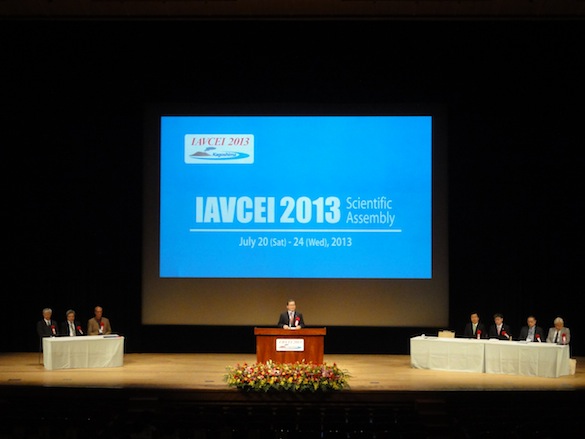KAGOSHIMA, JAPAN – The 2013 Scientific Assembly of IAVCEI, the International Association of Volcanology and Chemistry of the Earth’s Interior, has officially started in Kagoshima, Japan.

IAVCEI leaders and local elected officials welcome delegates from ~60 countries in today’s opening ceremony.
The conference is a volcanologist’s dream, with sessions focused on every aspect of volcanology and a mid-conference field trip to Kagoshima’s own volcano, Sakurajima (currently at alert level 3). Day #1 didn’t disappoint. I’ve already co-chaired a session on Lava Flows with a fantastic group of international scientists and gave a talk on the dynamics of pillow-dominated subglacial eruptions recorded in Undirhlithar quarry on the Reykjanes Peninsula in southwest Iceland. You may remember that Lindsey Bowman (’12) and Becky Alcorn (’11) completed I.S. theses in Undirhlithar. Here are some highlights from our presentation:

Undirhlithar quarry is a unique exposure that provides insights into the internal architecture of a glaciovolcanic pillow ridge.

Most of the quarry is made of pillow lavas, which are emplaced during effusive subaqueous eruption. We’ve also identified intrusions and dikes that feed the overlying pillow lava flows.

There are also fragmental units in the quarry. The tuff, or fine ashy layers, probably represent periods of quiescence between eruptive events. The tuff-breccia, which has larger clasts, are formed during explosive activity and as a result of gravitational collapse along steep slopes.





60 countries represented! That is impressive. Sounds like an incredibly productive meeting. I look forward to images from your field trip!